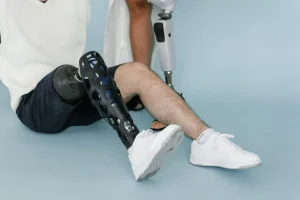
Wound management remains a critical aspect of primary care, influencing recovery times, patient comfort, and healthcare costs. Whether managing acute injuries, chronic wounds, or minor infections, clinicians must combine evidence-based strategies with practical skills to ensure optimal outcomes.
Infection Prevention
Preventing infection is the foundation of effective wound care. Poorly managed infections can delay healing, increase complications, and lead to hospitalisation. Key practices include:
- Hand Hygiene: Rigorous handwashing before and after dressing changes.
- Aseptic Technique: Using sterile equipment and maintaining a clean environment.
- Appropriate Antimicrobial Use: Applying antiseptics judiciously to reduce colonisation while preserving healthy tissue.
Implementing these measures consistently reduces the risk of wound deterioration and promotes faster recovery.
Dressing Selection
Selecting the appropriate dressing is essential to support wound healing. Considerations include:
- Wound Type and Exudate: Different wounds require tailored dressings to manage moisture and protect the surrounding skin.
- Patient Comfort and Compliance: Comfortable, easy-to-use dressings encourage adherence and reduce anxiety.
- Infection Risk: Antimicrobial or absorbent dressings may be indicated for infected or highly exudative wounds.
Following local guidelines and evidence-based protocols ensures that dressing choices meet clinical and patient needs.
Patient Education
Educating patients about their wound care enhances healing and empowers self-management. Key strategies include:
- Explaining the purpose and proper technique for dressing changes.
- Highlighting signs of infection or deterioration.
- Advising on lifestyle factors, such as nutrition, smoking cessation, and activity modifications that support wound healing.
Clear communication and patient engagement improve adherence and early identification of complications.
Holistic Approach
A holistic approach ensures that wound care is tailored to individual patient needs. Primary care clinicians should:
- Assess comorbidities, mobility, and social support that may impact healing.
- Collaborate with multidisciplinary teams, including district nurses, podiatrists, and physiotherapists.
- Review progress regularly, adjusting treatment plans as necessary to optimize outcomes.
By integrating these principles, healthcare providers can reduce complications, shorten healing times, and enhance overall patient satisfaction.
Professional Development Opportunities
For clinicians looking to expand their skills in wound management and minor injury care, practical training can make a significant difference:
- Acute Wound Management for Urgent Primary Care Practitioners: This course focuses on evidence-based management of acute wounds, including infection prevention and dressing selection.
- Minor Injury Essentials (Face-to-Face, RCN Accredited): Provides hands-on training in managing minor injuries, improving confidence and clinical decision-making in primary care settings.
These courses equip practitioners with the knowledge and confidence to apply best practices in real-world settings, improving patient outcomes.
Conclusion
Effective wound management requires a combination of infection prevention, informed dressing selection, patient education, and a holistic approach to care. By staying current with evidence-based guidelines and undertaking professional development opportunities, primary care providers can ensure optimal healing, reduce complications, and enhance the patient experience.
References
- Guest, J.F., Keast, D., & Botros, M. (2021) ‘Impact of wound care on patient outcomes in the community: a systematic review’, Journal of Wound Care, 30(8), pp. 544–554. doi:10.12968/jowc.2021.30.8.544.
- Wounds UK (2022) Best Practice Statement: Holistic Assessment of Wounds, London: Wounds UK. Available at: https://www.wounds-uk.com/resources/details/best-practice-holistic-assessment-of-wounds (Accessed: 23 September 2025).







